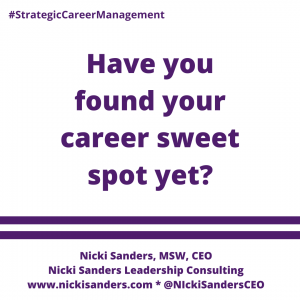Three Obstacles Hindering Women’s Career Advancement
By Rosina Racioppi, Forbes New York Business Council
For over 24 years, I have been working with organizations eager and willing to advance women to leadership positions. Interacting with those on the frontlines of advancing female talent, as well as with talented women across many industries, I have observed a number of stumbling blocks to creating a diverse talent pipeline, even in the most well-intentioned organizations. Interestingly, these obstacles can often be overcome by women themselves in ways that frequently are overlooked.
There is no doubt that gender parity, the equal representation of women at all corporate levels, has not yet taken hold in all organizations, as women in our programs report to us over and over again. As a result, many women operate in an environment without the benefit of high-level female role models.
There are also male managers who have not yet embraced the concept of conscious inclusion, whereby they actively engage in finding, supporting and retaining female talent, getting passed biases of which they may have been unaware. These obstacles make it incumbent upon women to lead the charge for their own success. I am in no way “blaming the victim.” I am, however, suggesting that programs, blogs and books on achieving gender parity underplay the shifts women need to make to achieve their career goals.
Let’s look at three major barriers that women themselves often construct on their road to success — ones we frequently encounter as we work with organizations to develop their female talent.
1. Believing hard work alone is enough.
We continually hear from the high-potential women attending our programs — especially early career women — that if they are superior performers, they will be noticed and promoted. Not so. Certainly, superior performance is likely to result in job security and perhaps annual salary increases, but it is not a viable strategy for advancement. In fact, the opposite can be true.
By aiming their efforts at hard work and not the “right work,” women can sentence themselves to staying stuck in place. They can get bogged down in 100 pounds of information when they need only five. Additionally, they can bypass the most important work of all: The work that contributes to corporate growth and profitability — the work that gets them noticed.
Antidote: Women from their earliest career stages must work strategically, not just diligently. They should always be asking, “Is what I am doing contributing to organizational impact?” And need to look for ways to benefit both their company and its various markets. By keeping an eye on the outcome of their activities — not just on the activities themselves — women can thereby increase their corporate effectiveness.
2. Failing to develop career-building relationships.
It continues to amaze me that in the surveys completed at the start of our programs, we see that over half of the mid-career women participating indicate they have never had a mentor. This is a mistake that can result in career-long ramifications.
In my independent research, and in my 24 years of experience working with top-level organizations, I have found that it is virtually impossible to get ahead without forging internal and external relationships that include mentors, networks and sponsors. These relationships provide a vital reality check for women about themselves and their organizations. Without the insights of men and women who understand how to navigate the corporate landscape, I’ve seen that career advancement is, at best, unlikely.
Antidote: Women need to actively seek out mentors, sponsors and networks that will help them dovetail their competencies and preferences with corporate needs. I’ve found these relationships to be the sounding boards for success. However, before approaching potential sponsors — corporate power players and internal advocates for advancement — women need to actively engage their networks and mentors to help them pinpoint what will make them likely candidates for a career-boosting sponsorship.
3. Waiting for, rather than seeking out, career opportunities.
Too often, we’ve seen that women wait to be noticed, wait to be asked and wait to be invited to the table. As a result, they can wind up left behind, as their male counterparts willingly step up. For example, we frequently hear from talented women that they are reluctant to leave their comfort zone to take on stretch assignments. Unlikely to then get the same quality and quantity of career-advancing feedback as their counterparts who step up, they often fail to ask for it. And at meetings with corporate power players, they take a laid-back stance, even when they can make noticeable contributions.
Antidote: Women at all levels need to believe in themselves and have the confidence to show up and be noticed by their managers, their peers and senior executives. They need to realize that the greatest risk lies in not stepping up. Women must also acknowledge that perfection is not an option. Perfection, as a solitary and inward process, can sabotage career advancement. Instead, women must embrace an outward approach, working collaboratively to achieve corporate goals.
One final observation: Overcoming these three obstacles is not linear. Our organization’s experiences with thousands of talented women have shown that the solutions and the behavioral shifts are intertwined. When women realize hard work alone is not enough, they will start to seek out relationships that inform and support their advancement. As they do, their mentors, sponsors and networks will help them define rewarding and realistic career opportunities and the strategies that will put those opportunities in their grasp.
